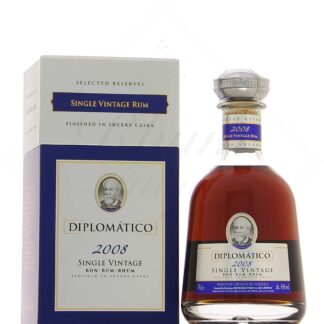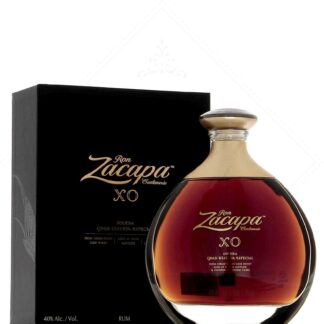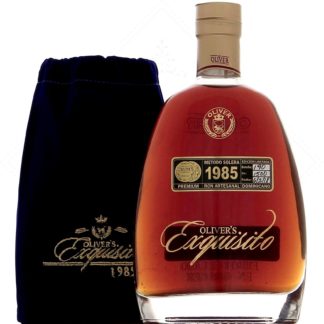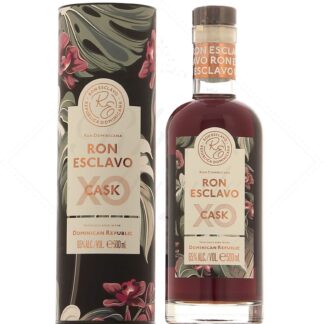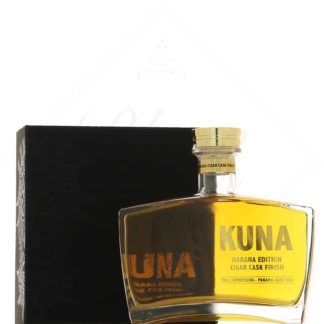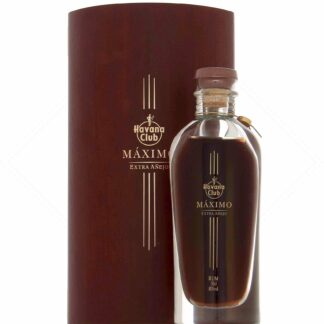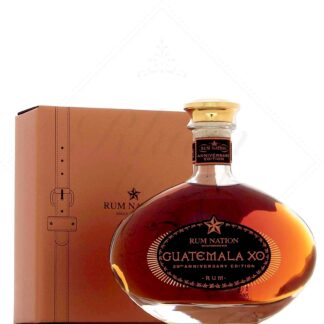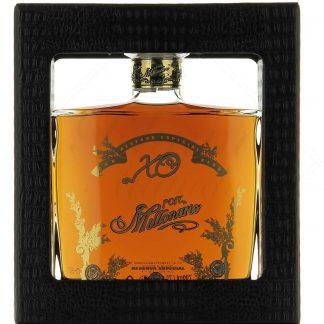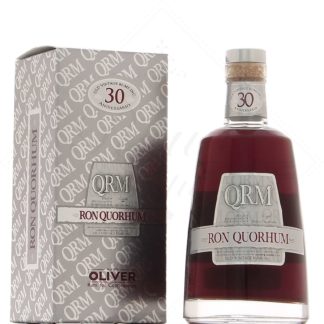Traditional Spanish rum (Ron)
Traditional Spanish rum ("ron") takes its name from the time of colonization, when Spain expanded its holdings in Latin America and the Caribbean. The style of rum produced in these countries today has shared influences from Spain's colonial past.
This is a generalization, as there are many exceptions to the rule, but it's fair to say that a majority of Hispanic-sounding rums have a fairly similar style and approach.
The history of traditional Spanish rum
The first distillations of sugarcane certainly took place in the Canary Islands. But the most concrete traces date back to the 16th century in South America. Cane was quickly introduced there, as was distillation, but the latter was very primitive and of very poor quality.
Cane brandy took some time to establish itself in South America, as well as in the Spanish colonies of the Caribbean. The first reason for this was that the Spanish had little interest in cane and sugar, as they had long focused on gold above all else.
Secondly, many traditional local beverages already existed. They were consumed in large quantities by local populations. Some Indians might add a little "aguardiente de caña" to their "chicha" or "pulque", but this remained marginal. As for the colonists, they preferred to import spirits and liqueurs from the Mother Country.
Sugar cane distillation was also underdeveloped, as labor was scarce. The Spanish crown prohibited the employment of Indians in sugar mills, preferring to reserve them for the search for precious metals. In addition, the Spanish made far less use of slavery than their Portuguese or French neighbors.
Rum was frowned upon
The only real rums consumed locally were imported. Their consumption was discouraged by royal and religious authorities. The reasons were hygiene and public order, but also competition with spirits from the Old Continent. For a long time, this led to repressive measures against small distilleries throughout South America.
Here and there, however, a few small-scale productions survived. They were of various types and their names varied from country to country. Mexico's "chinguirito" was well known, cheap and of slightly higher quality than the average. Venezuela 's aguardiente also seemed to do well.
Until the end of the 18th century, the Spanish really concentrated on their continental colonies, clearly losing interest in the West Indies. Cuba did produce a small amount of rum, after the mills were modernized in the early 17th century, but these improvements merely kept the sugar industry afloat.
The situation was much the same in Puerto Rico. The difference was that more rum than sugar was produced there (by importing molasses from Cuba). Next came the eastern part of the island of Hispaniola (which became Santo Domingo after being sold by France in 1697). Its production was ridiculous compared to that of neighboring Santo Domingo (later Haiti).
Cuba's rum boom
After a brief English occupation in 1762, Cuba was transformed. The island was covered with sugar mills and distilleries. Unfortunately, the quality of their rums remained decidedly mediocre.
The end of Saint-Domingue and the arrival of free trade in Spanish ports at the end of the 18th century completely reshuffled the deck. The benefits of developing the sugar trade became apparent, and production took off again in spectacular fashion. With all this sugar naturally came a lot of molasses, and therefore more and more rum. The production of aguardiente was thus largely legalized, and of course taxed at the same time.
Cuba was the world's leading sugar producer in the 19th century. The island's rum makers were also the first to adopt the distillation column. This was to change everything in the world of rum. In the early days, quality didn't really improve. Cuba struggled to sell its rum and continued to export molasses on a massive scale.
Then came an invention that changed everything: charcoal filtration. By combining this method with column distillation, Facundo Bacardi invented light rum. It was an instant hit, especially in the United States. This style helped build cocktail culture, and reached its peak during Prohibition. The true Spanish tradition was born.
Rum continues to grow
Meanwhile, consumption in Puerto Rico remained very local. It was also in the middle of the 19th century, with the arrival of the column, that we saw an improvement, thanks in particular to the Don Q distillery.
In Santo Domingo, people continued to drink clairin until 1844, the year of independence, when the Dominican Republic was proclaimed. Cuban refugees came to build up a small sugar industry, which included a few distilleries.
The independence of Latin American countries began in the 19th century. New producers arrived, like Argentina. Other countries, like Venezuela, modernized their equipment. But the quality was not always there, because there were not enough outlets. The elite still preferred brandies and other mutated wines.
The word "ron" first appeared in 1811. The two terms (aguardiente and ron) were retained, with a clear distinction made between them according to the quality or refinement of the drink. In the decades that followed, rum spread much more widely across the continent. But imports remained the most popular. Distillers began to imitate the work of their counterparts in the Caribbean, and Cuba in particular, leading to a marked improvement.
From the early 20th century to the present day
In the 20th century, Mexico began to produce more and more rum, with small distilleries on the verge of going underground. But medium-sized official distilleries also appeared, as well as large, high-volume factories. The country produced rum from pure cane juice, raw sugar, molasses and even Bacardi, which built one of its units here.
Rum is made everywhere except in Chile, where cane doesn't grow. Cane plantations, sugar mills and distilleries flourish from Central America to Argentina, via Colombia, Ecuador, Peru and Bolivia.
The Dominican Republic has been making steady progress since the Second World War. In addition to its "cleren" (banned by the authorities), it continues to produce Cuban-inspired rum, while steadily increasing its sugar production. This was the birthplace of the famous Brugal and Barcelo brands, among others.
The end of the 20th century also saw an explosion of distilleries and brands from Central America. Guatemala, Nicaragua, Costa Rica and Panama saw the emergence of many highly successful brands in the pure Spanish tradition, both locally and for export.
Spanish-style rum
Traditional Spanish rum is a light molasses rum, distilled in multi-column units and often sweetened.
One of the keys to this tradition is a heritage of Cuban style: aguardiente. After learning how to make rums as light and uncluttered as possible, Cubans felt the need to give them a slightly stronger rum taste once again. So they turned to the old methods, with more traditional equipment, to reproduce fuller-bodied, more aromatic aguardientes. It is these aguardientes that they blend with their light rums, to create a balanced blend.
There's also a method used by many producers in this tradition: the solera. This ageing method is inspired by the Andalusian bodegas where sherry wine is matured. It involves stacking barrels, with the oldest eaux-de-vie at the bottom and the youngest at the top. When rum is racked from the bottom tier for bottling, the top tier is added, and so on. In this way, rums of different ages are blended throughout the ageing process, the older ones "educating" the younger ones.
A very smooth style of rum
Sweetening is also part of the Latin tradition. Cubans sweeten their rums slightly to smooth out the edges, but some distilleries make their very smooth, sweet side a trademark. Some Latin rums are very smooth and syrupy, making them very flattering and easy to drink.
Sweetening is also a way of accompanying another fundamental characteristic of traditional Spanish rums: lightness. Most of these rums have a very low proportion of aromatic congeners. They were originally designed for use in cocktails, so their aromas should not dominate the mix. To become tasting rums, they need a little help from sugar, which becomes a flavor enhancer.
Discover the Spanish style
A wide variety of traditional Spanish rums are available. To discover their origins, Cuban rums are a must. La Progresiva is a very good example of this light, yet tasty and low-sugar style.
In Venezuela, both dry and very sweet rums can be produced. You can familiarize yourself with Santa Teresa, or Diplomatico.
If you want to know what an aguardiente is like, turn to this rum from Panama bottled by Old Brothers.
The list is very long, as you'll see, but we can also advise you to discover the balance of a Malteco 15 ans (Panama) or a Coloma 8 ans (Colombia). Finally, for a light, aged rum, we recommend the classic Flor de Caña 12 ans (Nicaragua). Read less
